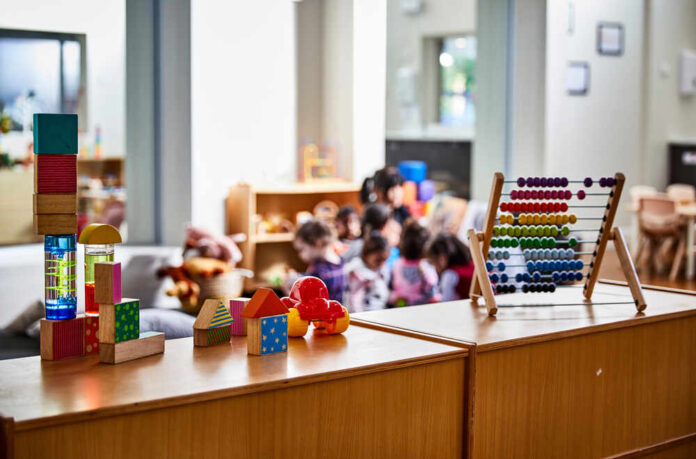
Reports indicate a notable surge in daycare costs across the United States rising by 6% in July compared to the previous year—nearly twice the overall inflation rate of 3.2%. Many individuals find themselves in a challenging predicament, feeling trapped without viable alternatives and forced to take the financial blow.
This uptick in expenses can pose a significant financial strain for single parents. Each family’s circumstances are unique, and even nuclear families might grapple with the affordability of daycare costs in the present day. The average expense for full-time, center-based infant daycare in 2023 is $1,136 per month per child.
Childcare costs more than college tuition in 28 U.S. states https://t.co/mjf1CeKvZd
— FORTUNE (@FortuneMagazine) October 26, 2018
Location can play a pivotal role in determining the weight of the financial burden with some families facing staggering annual childcare bills. A survey revealed that 59% of parents plan to shell out over $18,000 per child for childcare in 2023. Alarming yet predictable, childcare costs have risen for the 10th consecutive year.
Parents nationwide are giving up a substantial portion of their income ranging from 20% to 47% solely to cover their childcare expenses. Many websites offer strategies for reducing childcare costs, including government programs, tax credits, co-op or in-house daycare, nanny-sharing initiatives, and the quest for free childcare alternatives.
Curiously many platforms overlook options that parents might have inadvertently omitted. How about seeking familial support, relocating to more budget-friendly areas, or transitioning into the stay-at-home parent role? With the growing financial pressure, why isn’t staying home with one’s child considered a viable solution?
Beyond the emotional value, the financial advantages of this choice are substantial. Opting for the stay-at-home path can result in significant savings that would otherwise be allocated to daycare expenses. The high cost associated with care can often rival or even exceed a considerable portion of one parent’s income.
Families can channel their resources towards other critical needs or advantageous investments such as housing, education and debt reduction by forgoing childcare. Furthermore, this decision enables families to cut back on costs like fuel, work attire, fast food and more thereby providing immediate financial relief.
However, the impact isn’t merely financial; it extends to forging a stronger bond and a heightened connection between parents and their children. Some experts suggest that staying home during the crucial early years of child development can yield positive outcomes. This arrangement serves the best interests of both parent and child.
Envision a scenario where more mothers choose to remain at home during their children’s formative years supported by family and societal appreciation for this role. Such a shift could alleviate the government’s significant spending concerns in this realm.
We can’t cater to every family that leans towards childcare as the rewards of embracing this transformation can extend to families and society at large. For many families the choice to stay at home is viewed as an ideal option due to its numerous benefits in terms of child development, family bonding and overall well-being.














